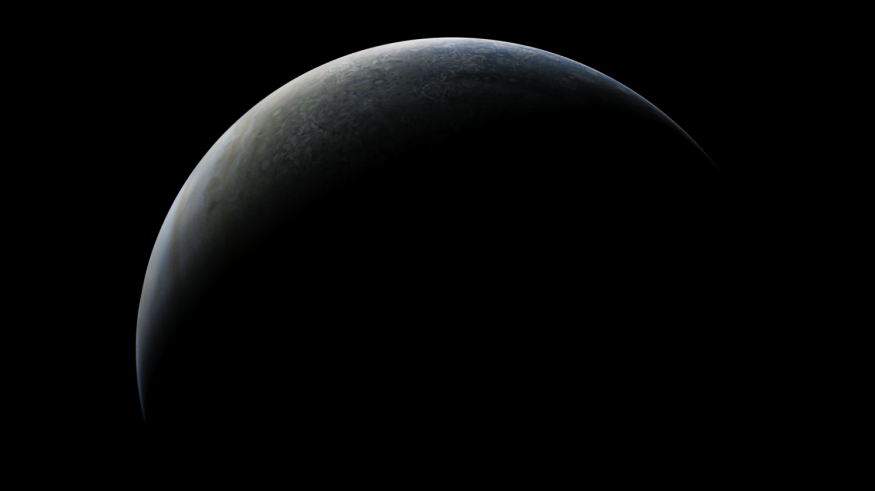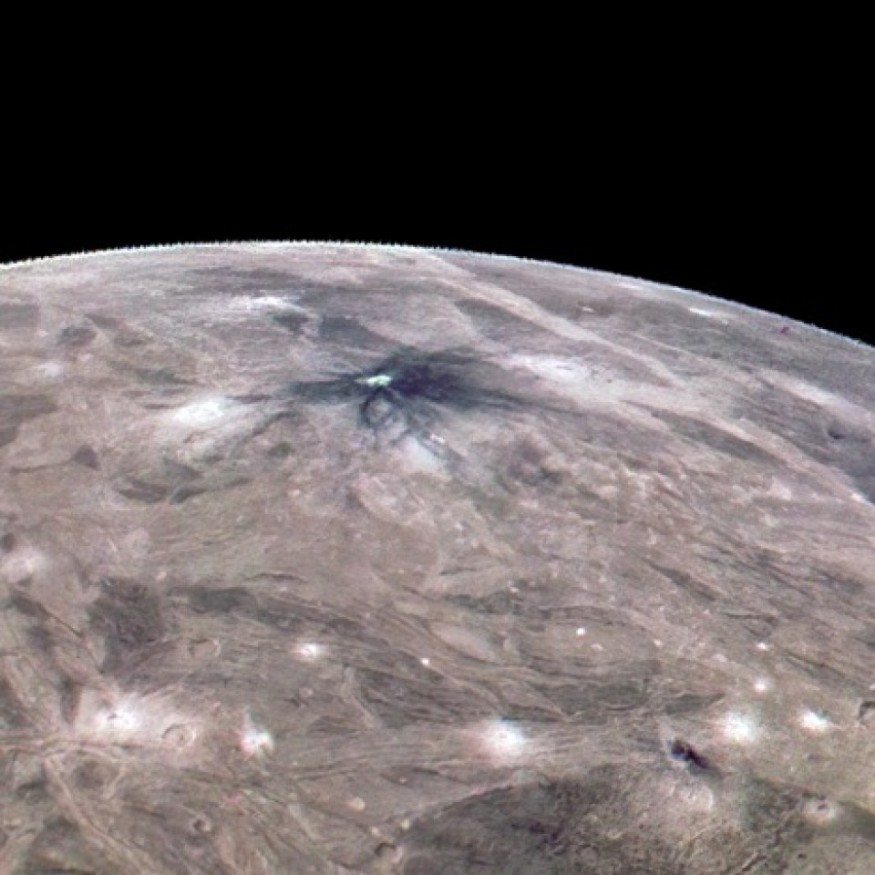NASA's Juno mission has once again dazzled people with stunning photographs of Jupiter and its moon Ganymede. A photo of Jupiter in the crescent phase got scientists in awe.
The shot was taken by NASA's Juno spacecraft as it neared the giant planet during a routine close encounter.
Unlike the Moon or Venus, NASA stated this image of Jupiter in a crescent phase was impossible to see from Earth, even with a telescope.
Jupiter's orbit is outside of Earth, so a viewer on Earth can only see the side of Jupiter lighted by the Sun. As a result, the planet seems to be completely filled at all times.

Aside from the finding, NASA also released a stunning image of Jupiter lighted from behind. This image, however, was created from seven previous photographs obtained by Juno on its 39th close approach. Kevin M. Gill worked on the final image.
Suppose you could accompany NASA's Juno spacecraft as it visits Jupiter during one of its frequent near passes by the giant planet. The space agency said the probe would treat you to a stunning view like this.
There's a lot of love floating around in space on this #ValentinesDay, but what has us over the moon(s) right now are these views of Ganymede and Jupiter from the #JunoMission. 😍 https://t.co/IESLs5Bxw8 pic.twitter.com/y9Xljwcgnq
— NASA Solar System (@NASASolarSystem) February 14, 2022
ALSO READ : NASA Juno Spacecraft Finds Weird Pepperoni Storm Topping Jupiter Similar To Your Favorite Pizza [Watch]
NASA Juno Spacecraft Snaps Amazing Photos of Crescent Jupiter, Moon Ganymede
Sources told Space.com that NASA Juno took the snapshot of Ganymede's dark spit in June 2021. Something happened when the probe was around 650 miles (1,046 kilometers) above Ganymede's surface.
A closer examination of the photograph revealed a massive crater measuring 9 miles (15 kilometers) in diameter. The finding stood out among other craters because of the black surface surrounding the point. Kittu was the name given to this enormous crater by astronomers.
Researchers believe the black substance was created when a tiny asteroid collided with the Earth. "Most of Ganymede's craters feature brilliant beams extending from the impact scar," they said, "but roughly 1% of the craters contain dark rays."
The rays stay black over time because they are a little warmer than the surroundings. Thus, ice is forced off to condense on neighboring cooler, brighter terrain, according to the researchers.

This look at the complex surface of Jupiter’s moon Ganymede came from NASA’s Juno mission during a close pass by the giant moon in June 2021.
Considering all of the aforementioned, Ganymede's black scar may remain the same hue for many years.
A radiation-filled atmosphere surrounds Jupiter, making it difficult for any spacecraft to take images in the vicinity. As a result, Juno, NASA's Jupiter Space Probe, is a critical tool for researching the planet.
Fortunately, this spacecraft is fully outfitted with all necessary equipment and components.
According to NASA, they collected the data reported in this recent finding from the JunoCam camera. Citizen scientist Thomas Thomopoulos had to enhance-color the photographs to make them more visible to the fans.
RELATED ARTICLE : Jupiter Mystery Solved After 30 Years, NASA's NuSTAR Telescope Detects Highest-Energy Light Ever From the Planet
Check out more news and information on Space in Science Times.












